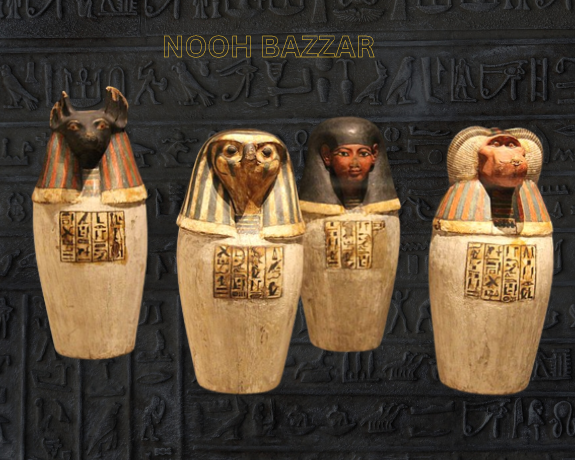Ancient Egyptian Canopic jars

Ancient Egyptian Canopic Jars
Ancient Egyptian Canopic jars were known to the ancient Egyptians at the end of the Sixth Dynasty as the four vessels, which were used to preserve the entrails of the deceased, and they were “Amseti, Hapi, Duamutef, and Qabah Senuf” … These names go back to the sons of Horus the Elder, and their mother is Queen Isis.
Their names are written on the four corners of the coffin in the belief that this preserves the body of the deceased and its organs until the time of resurrection.
Each of them has an effective role in preserving the body of the deceased intact until resurrection. Amseti is “the compassionate or gentle one” and is responsible for the canopic vessel that contains the “liver” because the ancient Egyptians believed that the liver was the seat of human feelings and emotions, and Amseti’s appearance was a mummified human, unlike his brothers. He derived protection from Mother Isis and was considered a protector of the south.
As for Hapi, he was mummified with the head of a sacred lance (the face of a monkey), and his mission was to protect the “lungs” from decomposition. He was protected by the goddess Nephthys, who was considered a protector of the north.
Ancient Egyptian Canopic jars were made of clay, and depending on which organ it contained, its head had the shape of one of the four gods.
While Duamutef represented the form of a mummified human with the head of a jackal (dog), and he was responsible for protecting the stomach, especially the stomach, and the goddess Neet was his protector, and his name was written in the east.
And finally… Qabah Snuf was in the form of a mummy with the head of a falcon. He was responsible for protecting the intestines and the west side, and he was protected from the gods Stolen.
Edited By Eman Sayed CEO NOOH BAZZAR

